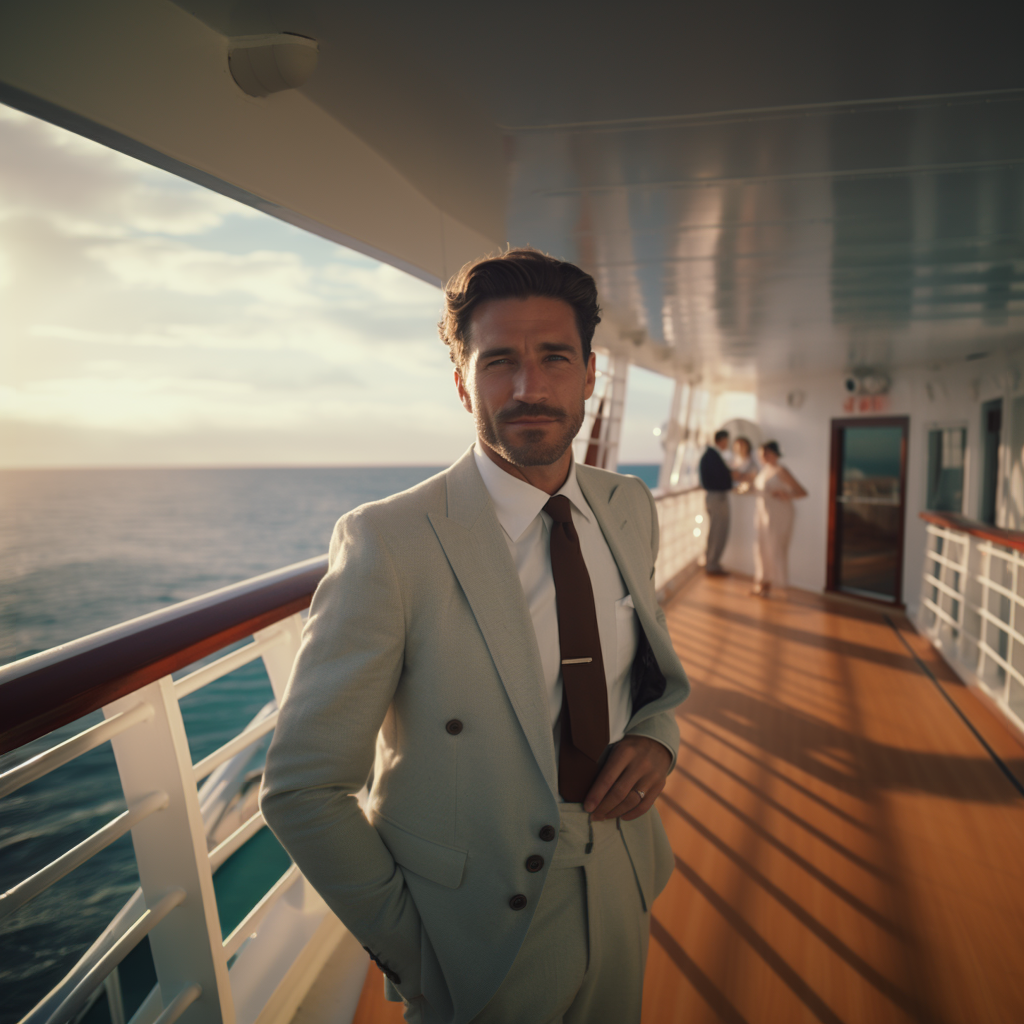Cruise Planning Tips
Tips For Choosing The Perfect Cruise Cabin
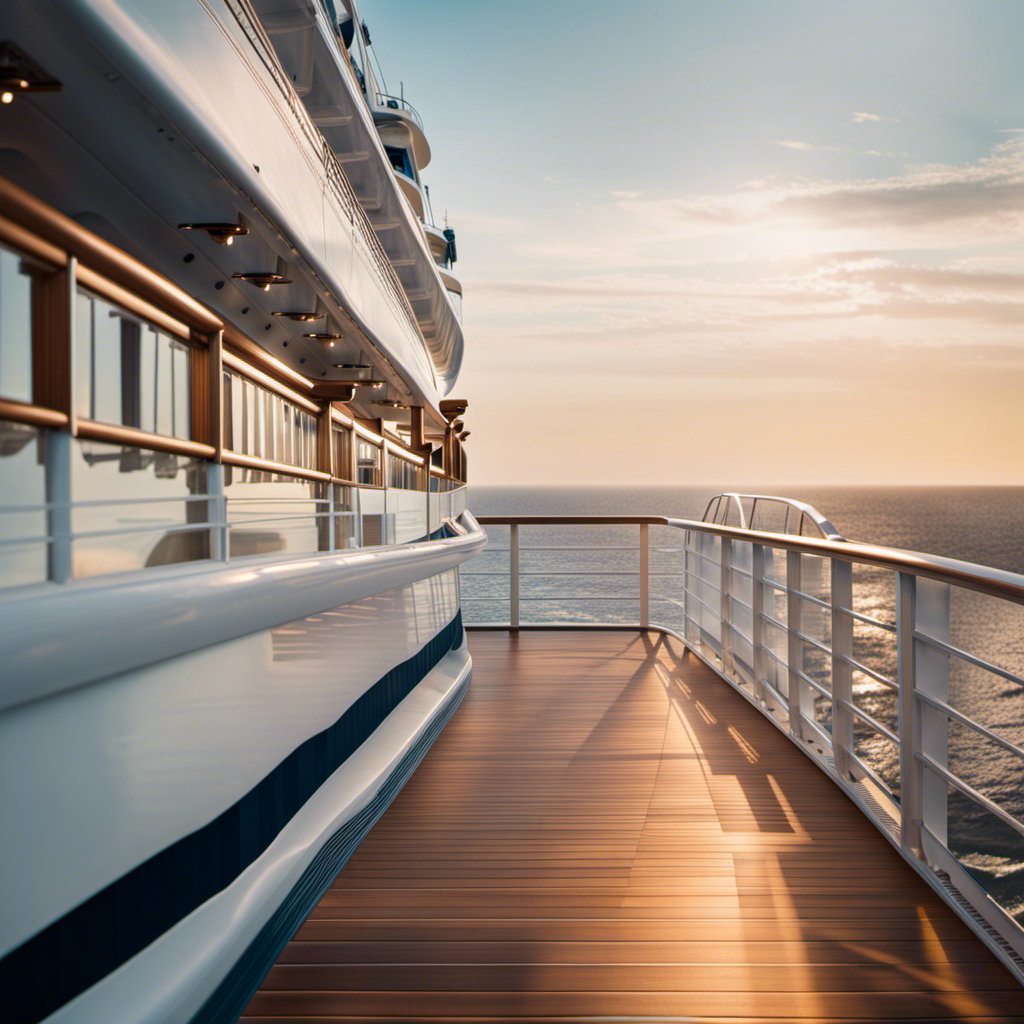
Did you know choosing the perfect cruise cabin can greatly enhance your vacation experience? With so many options available, it’s essential to keep in mind a few key factors.
First, consider the location of the cabin. Whether you prioritize easy access, breathtaking views, or a peaceful atmosphere, the right cabin location can make all the difference.
Secondly, setting a realistic budget is crucial. While basic cabins can still provide a great experience, it’s important to factor in additional expenses such as excursions and onboard activities.
Lastly, utilizing space-saving techniques and seeking assistance from a travel professional can help maximize your cabin’s potential.
In this article, I will provide you with valuable tips and insights to help you choose the perfect cruise cabin for your next adventure. So, let’s dive in and ensure you have the most enjoyable and memorable vacation possible.
Key Takeaways
- The location of the cabin is crucial for the overall cruise experience
- Consider your budget and factor in additional expenses when choosing a cruise cabin
- Different cabin locations offer different features and views, so choose based on your preferences and the destination
- Utilize space-saving techniques and consider seeking assistance from a travel professional for an enhanced experience
Tips for Location
When it comes to choosing the perfect cruise cabin, I always consider the location based on my preferences and needs. Cabin location plays a crucial role in the overall cruise experience.
The first thing I consider is the deck level. If I tend to get seasick, I opt for a cabin on a lower deck and in the middle of the ship, as it minimizes the motion felt. For easy access to various amenities and facilities, a cabin in the central area is a great choice. If I want to enjoy breathtaking views, I go for an upper deck cabin. Aft cabins offer a great view of the ship’s wake, while forward cabins provide a unique perspective of the ship’s direction. Interior-facing cabins are perfect for those who enjoy overlooking public deck areas. It’s also important to note that lower deck cabins may experience engine vibrations.
Depending on the destination, I choose my cabin location accordingly. For example, cabins with prime views of the Na Pali coast in Hawaii or cabins in Alaska for wildlife and glacier sightings are highly recommended. If I plan to transit the Panama Canal, a cabin with a window or better is a must for a memorable experience.
Overall, understanding the different cabin types and their locations is essential for finding the perfect cruise cabin.
Budget Considerations
Considering your budget is an important factor when selecting a cruise room. It is essential to be aware of the various cabin categories available and their corresponding prices.
Higher-end cabins, such as suites or balcony rooms, often come with a higher price tag, while interior cabins tend to be more budget-friendly. However, keep in mind that additional fees may apply, such as gratuities, daily service charges, and specialty dining. These costs can quickly add up, so it’s crucial to factor them into your overall budget.
To make the most of your budget, consider booking in advance and taking advantage of cruise promotions and discounts. Additionally, joining loyalty programs can provide booking discounts, and using a cruise line credit card may offer opportunities for upgrades or onboard credit.
Don’t forget to consider guarantee cabins for potentially lower prices and be open to bidding on upgrades or hoping for a free upgrade. By carefully considering your budget and exploring all available options, you can find the perfect cruise cabin that fits your financial needs.
Utilizing Space and Assistance
To maximize the limited space in smaller staterooms, I find it helpful to utilize space-saving techniques and seek assistance from a travel professional. Space-saving techniques can make a big difference in creating a more comfortable and organized cabin. Some techniques include using collapsible hangers, packing cubes, and over-the-door shoe organizers. These simple tricks can help maximize storage space and keep your belongings easily accessible. Additionally, utilizing the expertise of a travel professional can greatly enhance your cruise experience. They can help with flights, activities, and pricing, ensuring you get the best value for your money. Having a point person for assistance during the trip is also beneficial, especially if any issues arise. While a small service fee may apply, the benefits of using a travel professional far outweigh the cost.
Frequently Asked Questions
Are there any specific cabins recommended for families traveling with young children?
For families traveling with young children, I recommend choosing cabins with baby amenities like cribs and high chairs. Additionally, cabins with connecting doors are great for easy access between rooms, ensuring everyone stays together.
Can I request a specific cabin location, or is it assigned randomly?
You can request a specific cabin location on a cruise, but it is not guaranteed. Cabin assignments are typically random, but cruise lines try their best to accommodate requests based on availability.
Are there any cabins that offer extra privacy or are more secluded?
Yes, there are cabins that offer extra privacy or are more secluded on certain cruise lines. Some cruise lines offer suites with private balconies or secluded locations on the ship for a more exclusive experience.
Are there any cabins that are closer to the dining areas or entertainment venues?
There are cabins with ocean views and balcony access that are conveniently located near dining areas and entertainment venues. These cabins provide easy access to all the onboard activities and amenities, making your cruise experience even more enjoyable.
Can I bring my own bedding or pillows to make the cabin more comfortable?
Yes, you can bring your own bedding or pillows to make the cabin more comfortable. Many cruise lines allow guests to bring personal items to personalize their cabin. Just make sure to check the specific guidelines of your cruise line before packing.
Meet Asra, a talented and adventurous writer who infuses her passion for exploration into every word she writes. Asra’s love for storytelling and her insatiable curiosity about the world make her an invaluable asset to the Voyager Info team.
From a young age, Asra was drawn to the power of words and their ability to transport readers to far-off lands and magical realms. Her fascination with travel and cultures from around the globe fueled her desire to become a travel writer, and she set out on a journey to turn her dreams into reality.
Cruise Planning Tips
When Is The Best Time To Go On A Disney Cruise
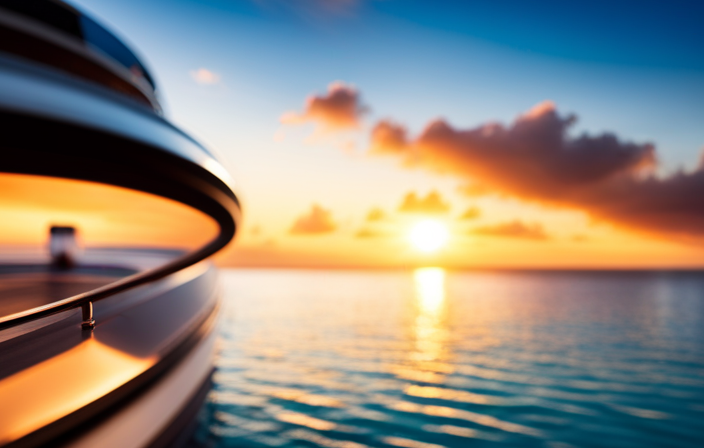
As a child, I’ll never forget the overwhelming joy I felt when my parents surprised me with a trip to Disney World. The enchanting experience of meeting beloved characters, riding thrilling attractions, and escaping into a world of fantasy has truly made a lasting impression on my heart. Now, as an adult, I long for that same feeling of wonder and happiness.
That’s why I’ve been considering going on a Disney cruise. But, as I began my research, I quickly realized that choosing the right time to embark on this enchanting adventure is crucial. With so many factors to consider, from weather and crowd levels to budget and special events, making the best decision can be overwhelming.
That’s why I’ve dedicated myself to uncovering the secrets of when is the best time to go on a Disney cruise. In this article, I will guide you through the process of finding the perfect time to set sail with Mickey and his friends. So, let’s dive in and discover the magic that awaits on a Disney cruise.
Key Takeaways
- Summer vacation is ideal for families
- Plan ahead to avoid scheduling conflicts
- Consider your schedule and availability
- Trust your instincts and personal preferences
Consider the Weather and Season
The best time to go on a Disney cruise is during the summer months when the sun shines brightly and the warm ocean breeze gently caresses your face.
Not only will you get to enjoy the pleasant weather, but you’ll also have the opportunity to take part in a variety of seasonal activities offered by Disney Cruise Line. From water slides to outdoor movies, there is never a shortage of fun things to do on board.
Additionally, going during the summer allows for better crowd control, as many families choose to travel during other times of the year when school is in session. So, if you want to avoid long lines and crowded spaces, the summer months are the ideal time to set sail on a Disney cruise.
Take into Account Crowd Levels
Consider factoring in crowd levels when planning your ideal moment to embark on a Disney cruise. It’s important to take into account the weather considerations and crowd management in order to make the most of your experience. Disney cruises are popular among families, which means certain times of the year can be more crowded than others. To help you visualize the crowd levels throughout the year, here is a table that provides an overview of the busiest and least crowded months:
| Month | Busiest | Least Crowded |
|---|---|---|
| January | High | Low |
| June | High | Low |
| September | Medium | Medium |
| November | Medium | Medium |
| December | High | Low |
By considering these crowd levels, you can plan your Disney cruise during a less crowded time, ensuring a more enjoyable experience. Now, let’s move on to the next section about looking for special events and themes.
Look for Special Events and Themes
To make your Disney cruise even more magical, be on the lookout for special events and themes that will enhance your experience. Disney offers a variety of special themed cruises throughout the year that cater to different interests. From Star Wars Day at Sea to Marvel Day at Sea, there is something for everyone.
These themed cruises provide unique opportunities to meet and interact with your favorite characters, participate in special activities, and enjoy exclusive entertainment. Whether you’re a fan of princesses, superheroes, or pirates, there’s a themed cruise that will make your Disney vacation even more memorable.
Additionally, planning for group activities can be a great way to bond with your family or friends on the cruise. Participating in trivia contests, scavenger hunts, or group games can create lasting memories and add to the fun of your Disney cruise.
As you consider the special events and themes available, it’s also important to plan around your budget to ensure a stress-free vacation. Transitioning into the next section about planning around your budget, it’s important to make informed decisions to maximize your Disney cruise experience.
Plan Around Your Budget
When planning your Disney cruise, it’s important to be mindful of your budget and make informed decisions to ensure a stress-free vacation.
For example, imagine you and your family are excited to embark on a magical Disney cruise to the Bahamas. By carefully planning around your budget, you can enjoy the breathtaking beaches, indulge in delicious local cuisine, and even participate in exciting water sports without breaking the bank.
Budget planning is a crucial aspect of any vacation, and a Disney cruise is no exception. Consider the financial considerations of your trip, such as the cost of accommodations, meals, and activities. By setting a budget and sticking to it, you can have peace of mind knowing that you are making the most of your financial resources.
Now, let’s consider the age of your traveling party and how it can impact your Disney cruise experience.
Consider the Age of Your Traveling Party
When considering the age of your traveling party for a Disney cruise, it’s important to take into account the needs and interests of young children. Going during non-school times can be advantageous as the ship is likely to have more activities and entertainment geared towards children, making it a more enjoyable experience for them.
On the other hand, if you’re traveling without children or with older teenagers, going during quieter periods can provide the opportunity to enjoy adult-only experiences and take advantage of fewer crowds and shorter lines.
Taking young children during non-school times
During non-school times, it’s ideal to take young children on a Disney cruise for a magical family experience. School holidays are the perfect opportunity to plan a trip where the kids can fully immerse themselves in the enchantment of Disney. The cruise offers a wide range of family-friendly activities, ensuring that everyone, from toddlers to teenagers, will have a memorable time onboard. To emphasize this point, consider the following table:
| School Holidays | Family-Friendly Activities |
|---|---|
| Spring Break | Character meet and greets |
| Summer Vacation | Deck parties |
| Winter Break | Water slides |
These activities are designed to keep young ones entertained and excited throughout the cruise. By taking the kids during non-school times, you can avoid crowds and enjoy a more relaxed atmosphere. Plus, it allows you to take advantage of adult-only experiences during quieter periods without feeling overwhelmed.
Enjoying adult-only experiences during quieter periods
While the kids are busy exploring the onboard water slides and meeting their favorite characters, parents can relax and unwind in the tranquil adult-only areas, indulging in spa treatments and sipping cocktails by the pool.
Disney Cruise Line offers a range of adult-only activities and exclusive experiences that cater to parents’ interests and desires. From upscale dining options at Palo and Remy to luxurious spa treatments at Senses Spa, there’s something for every adult to enjoy.
Take a dip in the Quiet Cove Pool, reserved exclusively for adults, or attend a mixology class to learn how to make your favorite cocktails. During quieter periods, such as non-school times, these adult-only areas are even more serene and accessible.
So, while planning your Disney cruise, be sure to research itineraries and ports of call to make the most of your adult-only experiences. Transitioning into the next section, let’s explore how to make the most of your time ashore.
Research Itineraries and Ports of Call
Exploring the various itineraries and ports of call will transport you to enchanting destinations on a Disney cruise. Researching destinations is an important step in planning your perfect vacation. Take the time to compare cruise lines and see which one offers the ports of call that interest you the most.
Disney cruises offer a wide range of itineraries, from tropical Caribbean islands to the stunning beauty of Alaska. Each destination has its own unique charm and attractions, so it’s worth doing your research to find the one that suits your preferences. Consider factors like the length of the cruise, the activities available at each port, and the overall atmosphere of the itinerary.
By thoroughly researching the itineraries and ports of call, you can ensure that your Disney cruise will be a truly magical experience. Don’t forget to check for promotions and offers to make the most of your vacation.
Check for Promotions and Offers
To make sure you don’t miss out on any special deals, be sure to check for promotions and offers before booking your Disney cruise. Disney Cruise Line often offers promotions and discounts throughout the year, so it’s important to stay informed and take advantage of these opportunities.
One booking strategy is to sign up for the Disney Cruise Line newsletter or follow them on social media to receive updates on the latest promotions. Additionally, you can contact a travel agent who specializes in Disney cruises, as they may have access to exclusive deals and offers.
By checking for promotions and discounts, you can save money and make your Disney cruise even more magical.
Now, let’s move on to the next step and consult with a Disney cruise specialist to ensure you plan the perfect vacation.
Consult with a Disney Cruise Specialist
Once you’ve checked for promotions and offers, it’s time to consult with a Disney Cruise Specialist to ensure that your vacation is perfectly planned. These experts have extensive knowledge about Disney cruises and can provide valuable insights about the best time to go based on your budget and preferences. Whether you’re concerned about Disney cruise cost or looking for the best Disney cruise accommodations, a specialist can guide you through the options available. To help you make an informed decision, here’s a comparison of different cabin types and their features:
| Cabin Type | Features |
|---|---|
| Inside Cabin | No window, perfect for budget-conscious |
| Oceanview Cabin | Window with a view, great for families |
| Balcony Cabin | Private balcony, ideal for relaxation |
By consulting with a Disney Cruise Specialist, you can make the most out of your vacation experience. They can help you factor in your schedule and availability to ensure you choose the perfect time for your Disney Cruise adventure.
Factor in Your Schedule and Availability
When considering the best time to go on a Disney cruise, it’s important to factor in your schedule and availability. As someone with work or school commitments, it’s crucial to plan ahead and ensure that you can take time off for a vacation. By considering your schedule, you can choose a time that works best for you and maximize the enjoyment of your Disney cruise experience.
Considering work or school commitments
Considering work or school commitments, many families find that the best time to go on a Disney cruise is during summer vacation, as it allows for a longer period of time to be away without interfering with academic or professional responsibilities.
Finding a work-life balance can be challenging, and scheduling conflicts often arise when trying to plan a family vacation. By choosing to go on a Disney cruise during summer break, families like Sarah’s can ensure that they have ample time to fully enjoy the experience without worrying about missing work or school. It provides the opportunity to relax and create lasting memories without the stress of juggling daily responsibilities.
Planning ahead for vacation time is crucial to ensure that everyone can participate and make the most of the Disney cruise experience.
Planning ahead for vacation time
Planning ahead for your vacation is crucial to ensure that you have enough time to fully enjoy the experience without any scheduling conflicts.
Here are some planning tips to help you make the most of your Disney cruise:
-
Research the itineraries: Look into the various Disney cruise itineraries and choose the one that best suits your preferences. Consider factors such as destination, duration, and activities offered.
-
Book in advance: Disney cruises are popular and tend to fill up quickly, so it’s important to secure your spot early. Booking in advance also gives you more options to choose from.
-
Consider the right duration: Decide how long you want your cruise to be. Disney offers cruises ranging from a few days to over a week. Think about how much time you can take off work or school and how much time you want to spend on the ship.
-
Coordinate with your schedule: Check your work or school calendar to find a time when you can take a vacation without any major conflicts. Consider holidays, breaks, or slower periods at work.
Planning ahead and choosing the right duration will help ensure a smooth and enjoyable Disney cruise experience. Trust your instincts and personal preferences as you make these decisions, and soon you’ll be on your way to an unforgettable vacation.
Trust Your Instincts and Personal Preferences
Go with your gut and choose the time that feels right for you to embark on a Disney cruise, based on your own personal preferences and instincts. When it comes to planning the perfect vacation, it’s important to trust your instincts and preferences. Consider factors such as weather, crowd levels, and special events happening on board. Use the table below to help visualize the different seasons and their pros and cons.
| Season | Pros | Cons |
|---|---|---|
| Spring | Mild weather and blooming flowers | Spring break crowds |
| Summer | Warm weather and longer days | High temperatures and large crowds |
| Fall | Mild weather and lower prices | Hurricane season |
| Winter | Festive atmosphere and lower prices | Cooler temperatures and holiday crowds |
By considering your preferences and weighing the pros and cons, you can make an informed decision on when to go on a Disney cruise. Trust yourself and choose the time that feels right for you!
Frequently Asked Questions
Can I bring my own food and beverages on a Disney cruise?
Absolutely! Bringing outside food and beverages on a Disney cruise is like having a secret stash of goodies. However, it’s important to note that certain items are prohibited for safety reasons.
Are there specific dress codes or attire requirements for different areas of the ship?
There are specific dress code requirements for different areas of the ship. It’s important to wear appropriate attire to ensure a comfortable and enjoyable experience on your Disney cruise.
Can I bring my own stroller or do I need to rent one on the ship?
You can bring your own stroller on a Disney cruise, so there’s no need to rent one. It’s convenient and familiar for your child, and saves you money. Enjoy the ease of bringing personal items on board!
Are there any age restrictions or height requirements for the different activities and attractions onboard?
There are age restrictions and height requirements for certain activities and attractions onboard a Disney cruise. This ensures the safety and enjoyment of all guests. It’s important to check the guidelines before participating in any specific activities.
What are some common amenities or services provided on a Disney cruise that I should be aware of?
On a Disney Cruise, you’ll be spoiled with an abundance of dining options, from casual to fine dining. And the entertainment options are out of this world, with Broadway-style shows and character meet and greets.
Conclusion
In conclusion, choosing the best time to go on a Disney cruise requires careful consideration of several factors.
By taking into account the weather, crowd levels, special events, and your budget, you can ensure a memorable and enjoyable experience.
It’s also important to consider the age of your traveling party and check for promotions and offers.
Consulting with a Disney Cruise specialist can provide valuable insights.
Ultimately, trust your instincts and personal preferences to make the best decision.
Remember, the early bird catches the worm, so plan ahead and secure your dream Disney cruise vacation.
Alfons is the visionary leader and driving force behind Voyager Info’s success. As the Editor in Chief, he brings a wealth of experience and an unwavering passion for travel to the helm of our cruise-centric platform.
With a lifelong fascination for exploring new horizons, Alfons discovered his love for the ocean and cruising at a young age. From sailing across pristine Caribbean waters to embarking on daring expeditions to far-flung destinations, he has amassed a treasure trove of first-hand experiences in the world of cruising.
Cruise Planning Tips
Which Cruise Is Best To See Northern Lights

If you share my dreams, you have likely imagined experiencing the mesmerizing show of the Northern Lights. The captivating play of colors in the night sky is an absolutely awe-inspiring sight. However, with numerous cruise options to choose from, which one stands out as the best choice for witnessing this natural wonder?
In this article, I’ll guide you through the top cruises that offer the best chance to see the Northern Lights in all their glory. From the majestic Norwegian Fjords to the icy landscapes of Iceland, from the rugged wilderness of Alaska to the enchanting Arctic Circle, there is a cruise for every adventurer seeking this mesmerizing spectacle.
We’ll explore the stunning landscapes of Canada and Greenland, the captivating destinations of Russia and Finland, and the untamed beauty of Scotland and Norway. So sit back, relax, and let me take you on a journey to find the perfect cruise to witness the awe-inspiring Northern Lights.
Key Takeaways
- Norwegian Fjords Cruise: Offers a stunning backdrop for witnessing the Northern Lights and the best time to see them on this cruise.
- Iceland Cruise: Provides pristine landscapes, ideal viewing conditions, and expert guidance, making it the best option for experiencing the Northern Lights.
- Alaska Cruise: Offers a darker and clearer sky, increasing the chances of witnessing vibrant streaks of colors in Alaska’s sky.
- Arctic Circle Cruise: Allows you to venture into the remote and untouched locations of the Arctic Circle, witnessing the Northern Lights and encountering unique Arctic wildlife.
Norwegian Fjords Cruise
If you’re looking to witness the mesmerizing beauty of the Northern Lights, you can’t go wrong with a Norwegian Fjords cruise! This breathtaking cruise takes you through the stunning Norwegian Fjords, offering an unforgettable experience of nature’s wonders.
The Norwegian Fjords provide the perfect backdrop for the Northern Lights, with their towering mountains, crystal-clear lakes, and picturesque villages. The best time to see the Northern Lights on a Norwegian Fjords cruise is from September to March when the nights are long and dark.
As you sail through the fjords, keep your eyes peeled for the dancing lights in the sky, painting vibrant streaks of green, blue, and purple.
Now, let’s move on to the next destination, an Iceland cruise, where you can continue your quest to witness the enchanting Northern Lights.
Iceland Cruise
Embark on an Iceland cruise to witness the captivating dance of colors in the night sky. The country’s pristine landscapes and clear, dark nights make it an ideal destination for viewing the northern lights.
Here are three reasons why an Iceland cruise is the best way to experience this natural phenomenon:
-
Unforgettable landscapes: As you sail along Iceland’s rugged coastline, you’ll be treated to stunning views of towering mountains, cascading waterfalls, and picturesque fjords. These breathtaking natural wonders provide the perfect backdrop for the northern lights.
-
Ideal viewing conditions: The best time to see the northern lights in Iceland is from September to April. During these months, the long and dark nights, combined with minimal light pollution, create optimal conditions for witnessing this magical spectacle.
-
Expert guidance: On an Iceland cruise, you’ll have access to knowledgeable guides who will help you navigate the best viewing spots and provide insights into the science and folklore behind the northern lights.
Now, let’s set sail for an Alaska cruise, where more northern lights adventures await.
Alaska Cruise
Now, let’s set sail and explore the wonders of an Alaska cruise, where the dancing colors of the night sky await.
An Alaska cruise is one of the best ways to witness the breathtaking beauty of the northern lights. The best time to see this natural phenomenon is during the winter months, from September to April. The darker and clearer the sky, the better chance you have of witnessing the auroras in all their glory.
Imagine standing on the deck of a luxurious cruise ship, surrounded by snow-capped mountains and icy fjords, as vibrant streaks of green, purple, and blue illuminate the sky above. It’s truly a sight to behold.
Now, let’s continue our journey and discover the magic of an Arctic Circle cruise.
Arctic Circle Cruise
If you’re looking for an unforgettable adventure, then venturing into the Arctic Circle on a cruise is a must.
Not only will you have the opportunity to witness the magical northern lights in remote and untouched locations, but you’ll also have the chance to encounter unique Arctic wildlife like polar bears and walruses.
And as you sail through these icy waters, you’ll have the chance to learn about the fascinating indigenous cultures and traditions of the Arctic, adding an enriching cultural aspect to your journey.
Get ready to be captivated by the beauty and wonder of the Arctic on this extraordinary cruise.
Venture into the Arctic Circle and experience the northern lights in remote locations
Set sail into the Arctic Circle and let the ethereal dance of the northern lights mesmerize you in the most secluded and breathtaking destinations.
-
Immerse yourself in the indigenous arctic cultures and traditions, learning about their rich history and way of life.
-
Explore remote villages and connect with the local communities, gaining insight into their customs and beliefs.
-
Witness the spectacular beauty of the Arctic landscapes, with vast icy plains and towering snow-capped mountains.
-
Experience the thrill of dog sledding across the frozen tundra, guided by expert mushers.
-
Indulge in traditional arctic cuisine, savoring the flavors of fresh seafood and reindeer meat.
Encounter unique arctic wildlife such as polar bears and walruses, as you venture further into the Arctic Circle.
Encounter unique Arctic wildlife such as polar bears and walruses
Embark on an unforgettable Arctic adventure and prepare to encounter the majestic polar bears and playful walruses in their natural habitat. As you sail through the Arctic Circle, you’ll have the opportunity to witness these incredible creatures up close and personal.
Not only will you be awed by their sheer size and beauty, but you’ll also learn about the importance of polar bear conservation and walrus habitat preservation. Expert guides will educate you about the challenges these animals face and the efforts being made to protect their fragile ecosystems.
From the comfort of your cruise ship, you’ll observe polar bears roaming the icy landscape and walruses basking on rocky shores. The experience is truly awe-inspiring and will leave you with a deep appreciation for the Arctic’s unique wildlife.
Now, let’s delve into the next section and delve into the indigenous cultures and traditions of the Arctic.
Learn about the indigenous cultures and traditions of the Arctic
Immerse yourself in the rich and vibrant indigenous cultures of the Arctic, where you can learn from the Inuit people’s ancient traditions and their deep connection to the land and sea.
For example, imagine hearing captivating stories from an Inuit elder about their ancestors’ resilience in facing the harsh Arctic conditions and their profound respect for nature. These indigenous traditions are a cornerstone of the Arctic lifestyle, and they offer a unique and invaluable insight into the history and spirituality of the region.
From the intricate art of soapstone carving to the rhythmic beats of traditional Inuit throat singing, the indigenous cultures of the Arctic are as diverse as they are fascinating. Learning about these traditions not only enriches your understanding of the Arctic but also fosters a deep appreciation for the resilience and wisdom of its indigenous peoples.
Transitioning into the subsequent section about the Canada and Greenland cruise, you’ll discover even more wonders beyond the indigenous cultures.
Canada and Greenland Cruise
Discover the breathtaking beauty of the Northern Lights on a Canada and Greenland cruise – an unforgettable experience that will leave you in awe. Embark on a journey through the icy waters of the Arctic, where you can witness the mystical dance of the Aurora Borealis.
This cruise offers the perfect opportunity to explore the indigenous cultures and traditions of the region, immersing yourself in their rich history. The best time to see the Northern Lights on a Canada and Greenland cruise is during the winter months, from November to March, when the nights are long and the skies are clear.
As you glide through the Arctic waters, you’ll be captivated by the vibrant hues of green, purple, and blue that illuminate the night sky.
Transitioning into the subsequent section about the ‘Norway and Sweden cruise,’ you’ll continue to be mesmerized by the wonders of the Northern Lights.
Norway and Sweden Cruise
When it comes to witnessing the mesmerizing northern lights, cruising along the Norwegian and Swedish coasts is an absolute must. Imagine sailing through the tranquil waters, surrounded by the ethereal glow of the aurora borealis dancing above you.
Not only will you have the opportunity to experience this natural wonder, but you’ll also get the chance to explore charming Scandinavian cities like Oslo and Stockholm, with their rich history and vibrant culture.
And if that’s not enough, you can indulge in thrilling winter activities like dog sledding and snowshoeing, adding an extra dose of adventure to your Scandinavian cruise.
Cruise along the Norwegian and Swedish coasts to witness the northern lights
Embark on a breathtaking cruise along the Norwegian and Swedish coasts to catch a glimpse of the mesmerizing northern lights. This once-in-a-lifetime journey offers the perfect opportunity for northern lights photography, allowing you to capture the ethereal beauty of this natural phenomenon.
The best time to see the northern lights is during the winter months, when the nights are long and the sky is clear. As you sail along the coast, keep your camera ready to capture the dancing lights in the sky, painting the darkness with vibrant hues of green, pink, and purple. Don’t forget to check the forecast for optimal viewing conditions!
After immersing yourself in the awe-inspiring northern lights, the cruise will take you to visit charming Scandinavian cities such as Oslo and Stockholm, where you can explore the rich history and culture of these vibrant capitals.
Visit charming Scandinavian cities such as Oslo and Stockholm
As we sail along the Norwegian and Swedish coasts, witnessing the awe-inspiring northern lights, we also have the opportunity to visit charming Scandinavian cities such as Oslo and Stockholm.
In Oslo, I can’t wait to explore the city’s rich cultural scene and visit its world-class museums and art galleries. From the iconic Vigeland Sculpture Park to the stunning works at the Munch Museum, there is so much to discover.
And in Stockholm, I’m excited to explore the archipelago, with its beautiful islands and picturesque landscapes. Whether it’s wandering through the narrow streets of Gamla Stan or taking a boat trip to the stunning Drottningholm Palace, there is no shortage of beauty and history to uncover.
And as we move forward, we’ll transition into the subsequent section where we can enjoy winter activities such as dog sledding and snowshoeing, immersing ourselves in the breathtaking landscapes of the Arctic.
Enjoy winter activities such as dog sledding and snowshoeing
Get ready to have a blast as we hit the snowy trails, experiencing the thrill of dog sledding and snowshoeing in the Arctic wonderland.
Picture yourself gliding through the pristine white landscape, feeling the crisp air brushing against your face as you mush through the snow with a team of eager and energetic dogs.
Feel the adrenaline rush as you navigate the winding trails, marveling at the breathtaking beauty of the winter scenery.
And if dog sledding isn’t your thing, strap on a pair of snowshoes and trek through the untouched snow, discovering hidden corners of this enchanting region.
Whether you choose to mush or hike, these winter activities are a perfect way to immerse yourself in the natural wonders of the Arctic.
Now, let’s venture into the next section and explore the captivating wonders of a Russia and Finland cruise.
Russia and Finland Cruise
Explore the enchanting wonders of Russia and Finland on a cruise that promises awe-inspiring views of the Northern Lights. This captivating journey takes you to remote locations where the ethereal dance of the lights is at its most mesmerizing. Picture yourself standing on the deck of the cruise ship, surrounded by the peaceful beauty of the Arctic landscape. As you gaze up at the star-filled sky, the vibrant hues of green, purple, and pink begin to flicker and dance above you. It’s a sight that will leave you breathless. To help you visualize this incredible experience, here is a table showcasing the mesmerizing destinations you’ll visit on the Russia and Finland Cruise:
| Destination | Description |
|---|---|
| St. Petersburg | Explore the rich history and culture |
| Helsinki | Delight in the charming Finnish capital |
| Murmansk | Witness the Northern Lights in full glory |
| Rovaniemi | Discover the magical hometown of Santa |
Now, let’s embark on a new adventure as we set sail for the Greenland and Iceland Cruise, where even more breathtaking sights await.
Greenland and Iceland Cruise
Imagine yourself sailing through the icy waters of Greenland and Iceland, surrounded by towering glaciers and dramatic landscapes that will leave you in awe. A Greenland and Iceland cruise is a once-in-a-lifetime experience that offers a unique opportunity to witness the beauty of the Arctic.
As you navigate through the crystal-clear waters, you’ll encounter unique Arctic wildlife, such as polar bears, whales, and seals. The stunning natural beauty of Greenland and Iceland is unparalleled, with vibrant blue icebergs and rugged fjords that stretch as far as the eye can see.
Whether you’re exploring the colorful houses of Reykjavik or hiking through the untouched wilderness of Greenland, this cruise will provide you with unforgettable memories.
And now, let’s set our sights on the next adventure – a Scotland and Norway cruise.
Scotland and Norway Cruise
After exploring the stunning landscapes of Greenland and Iceland, I couldn’t wait to embark on my next adventure: a Scotland and Norway cruise. This journey promised to showcase the breathtaking beauty of the Scottish Highlands and the majestic fjords of Norway. But what truly excited me were the winter activities in Scandinavia that awaited me. From dog sledding through snow-covered forests to witnessing the mesmerizing Northern Lights dance across the sky, this cruise offered an unforgettable winter wonderland experience. To give you a taste of what awaits, here’s a snapshot of the activities you can enjoy during this incredible voyage:
| Winter Activities in Scandinavia |
|---|
| Dog Sledding |
| Northern Lights Safari |
| Snowshoeing |
| Ice Fishing |
Now, let’s set sail to the next destination and discover the wonders of the Baltic Sea on a cruise that will take your breath away.
Baltic Sea Cruise
When considering a Baltic Sea cruise, I couldn’t help but be excited about the opportunity to sail through these stunning waters and possibly catch a glimpse of the mesmerizing northern lights in countries like Sweden, Finland, and Estonia.
Not only that, but I was also thrilled at the prospect of exploring historic cities such as Stockholm, Helsinki, and Tallinn, each offering its own unique charm and allure.
From the captivating culture to the breathtaking architecture, this cruise promised to be a truly unforgettable experience.
Sail through the Baltic Sea and have the chance to see the northern lights in countries such as Sweden, Finland, and Estonia
To truly experience the mesmerizing beauty of the northern lights, embark on a Baltic Sea cruise where you can witness their enchanting dance in countries like Sweden, Finland, and Estonia.
This breathtaking journey will take you through stunning landscapes, offering the perfect opportunity for sightseeing in Stockholm, Helsinki, and Tallinn.
In Stockholm, you can explore the charming old town, Gamla Stan, and marvel at the Royal Palace.
Helsinki will captivate you with its unique blend of modern architecture and rich history, while Tallinn will transport you back in time with its medieval charm.
But it’s not just about the cities; during the winter months, you can also indulge in thrilling winter activities in Sweden and Finland, such as dog sledding or snowshoeing.
Immerse yourself in the wonders of the Baltic Sea, and let the northern lights illuminate your journey as you explore historic cities such as Stockholm, Helsinki, and Tallinn.
Explore historic cities such as Stockholm, Helsinki, and Tallinn
Immerse yourself in the enchanting allure of historic cities like Stockholm, Helsinki, and Tallinn, and let their rich history and captivating charm transport you to a world of wonder. Explore local cuisine and traditional markets, where the tantalizing smells of freshly baked pastries and the vibrant colors of fresh produce will awaken your senses. Discover the rich history and architecture of each city as you wander through cobblestone streets lined with majestic buildings and grand cathedrals. In Stockholm, marvel at the medieval old town of Gamla Stan and the Royal Palace. In Helsinki, admire the stunning Helsinki Cathedral and the unique modern design of the Rock Church. And in Tallinn, lose yourself in the medieval atmosphere of the UNESCO-listed Old Town. As you explore these historic cities, you’ll be preparing to discover the unique culture and architecture of the Baltic countries.
Discover the unique culture and architecture of the Baltic countries
Experience the captivating allure of the Baltic countries as you delve into their unique culture and marvel at the intricate architecture that tells the stories of their rich history.
The Baltic countries, including Estonia, Latvia, and Lithuania, offer a fascinating blend of old-world charm and modern vibrancy.
As you explore these countries, you’ll have the opportunity to discover Baltic cuisine, which is a delightful fusion of flavors influenced by the surrounding regions. From hearty stews to delectable seafood dishes, the culinary traditions of the Baltic countries will tantalize your taste buds.
Additionally, you can immerse yourself in Baltic folklore, which is deeply rooted in the history and traditions of the region. Through vibrant folk dances, enchanting music, and captivating storytelling, you’ll gain a deeper understanding of the Baltic culture and its enduring traditions.
Frequently Asked Questions
How much does a northern lights cruise typically cost?
Factors affecting the cost of a northern lights cruise, such as duration and amenities, play a significant role in determining the price. Comparing the prices of different cruise lines that offer northern lights cruises is crucial. How much can you afford for this magical experience?
What is the optimal time of year to go on a northern lights cruise?
The optimal time of year to go on a northern lights cruise is during the winter months, from October to March. The best locations to witness this breathtaking phenomenon are Norway, Iceland, and Alaska.
Are there any specific cruise ships that offer the best viewing of the northern lights?
There are several cruise ships that offer the best viewing of the northern lights. These ships have top-notch amenities and are strategically positioned in the best locations for optimal viewing of this awe-inspiring natural phenomenon.
Are there any additional activities or excursions included in the cruise package?
On my last cruise, I was thrilled to find that there were a wide range of additional activities and cruise excursions included in the package. It made the trip even more memorable and enjoyable.
Is it possible to see the northern lights from the cruise ship itself, or do passengers need to disembark for optimal viewing?
It is possible to see the northern lights from the cruise ship, but there are some disadvantages. The best locations for disembarking during a northern lights cruise are areas with minimal light pollution and clear skies.
What Northern Lights Viewing Opportunities Does This Cruise Offer?
Embark on this remarkable cruise to experience the breathtaking Northern Lights. The cruise delights customization and fusion to create a unique viewing opportunity. This unforgettable journey combines luxury and natural beauty, providing an unparalleled way to witness the awe-inspiring phenomenon of the Northern Lights.
Conclusion
After considering all the options, it’s clear that the best cruise to see the Northern Lights is… none! Yes, you heard it right. Why bother going on a cruise when you can just stay at home and watch a documentary about the Northern Lights?
No need to worry about seasickness or expensive tickets. Just grab some popcorn, snuggle up on your couch, and enjoy the show from the comfort of your own living room. Who needs adventure and breathtaking views when you can have convenience and a cozy blanket?
Alfons is the visionary leader and driving force behind Voyager Info’s success. As the Editor in Chief, he brings a wealth of experience and an unwavering passion for travel to the helm of our cruise-centric platform.
With a lifelong fascination for exploring new horizons, Alfons discovered his love for the ocean and cruising at a young age. From sailing across pristine Caribbean waters to embarking on daring expeditions to far-flung destinations, he has amassed a treasure trove of first-hand experiences in the world of cruising.
Cruise Planning Tips
When Is The Best Time To Go On A Cruise To The Bahamas
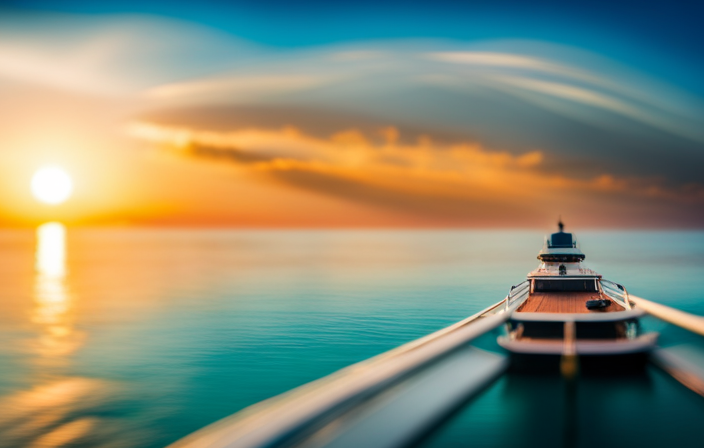
Are you prepared for the ultimate escape to an exotic location? Prepare for a Caribbean cruise to the Bahamas, as I am about to disclose the ideal time to begin this incredible adventure.
Picture this: crystal clear turquoise waters, white sandy beaches, and a warm, gentle breeze caressing your skin. Sounds like a dream, right? Trust me, it’s even better in reality.
In this article, I’ll take you on a journey through the seasons, uncovering the hidden gems of the Bahamas at different times of the year. From avoiding the crowds and exploring the great outdoors, to immersing yourself in vibrant festivals and encountering the fascinating wildlife, I’ve got you covered.
So, whether you’re a sunseeker, an adventurer, or a nature lover, I’ll provide you with all the tips and recommendations to make your cruise to the Bahamas a truly unforgettable experience. Get ready to make memories that will last a lifetime.
Let’s dive in!
Key Takeaways
- The best time to go on a cruise to the Bahamas is during the winter months (December to April) when the weather is mild and the waters are calm.
- The Bahamas offers a variety of cultural events and festivals, such as the Junkanoo Festival and Bahamas Carnival, which showcase the vibrant and rich heritage of the islands.
- The Bahamas provides unique and unforgettable wildlife encounters, including swimming with pigs in Exuma and exploring the diverse marine life and colorful coral of the Andros Barrier Reef.
- The Bahamas offers captivating natural wonders, such as the underground caves, lush vegetation, stunning beaches, and the stunning underwater cave system found in Lucayan National Park.
The Weather in the Bahamas Throughout the Year
If you’re looking for perfect beach weather, the Bahamas is a great choice for a cruise destination. The weather in the Bahamas is generally warm and sunny throughout the year, making it an ideal location for water sports enthusiasts.
The best time for water sports in the Bahamas is during the dry season, which runs from December to April. During this time, the temperature averages around 75-85°F (24-29°C), and the water is calm and clear.
However, it’s important to note that the Bahamas is also in the hurricane belt, and the hurricane season runs from June to November. To avoid the risk of hurricanes, it’s best to plan your cruise during the off-peak season. This will not only help you avoid the crowds but also ensure a safer and more enjoyable trip.
Avoiding Crowds: Off-Peak vs. Peak Season
During the off-peak season, the Bahamas offers a tranquil escape from the bustling crowds, allowing you to savor the crystal-clear waters and pristine beaches in blissful serenity. This is the best time to go on a cruise to the Bahamas if you prefer a more intimate and peaceful experience. While peak season may have its own allure, there are several advantages to visiting during the off-peak period. Firstly, you can enjoy lower prices on accommodations and cruise packages, making it a more budget-friendly option. Secondly, you’ll have fewer people to contend with, ensuring a more relaxed and uncrowded atmosphere. Lastly, you’ll have greater flexibility in choosing your cruise dates and itineraries. Take a look at the table below to see a visual representation of the benefits of off-peak vs. peak season in the Bahamas:
| Peak Season Benefits | Off-Peak Advantages |
|---|---|
| Vibrant atmosphere | Tranquil escape |
| More entertainment options | Lower prices |
| Higher chance of good weather | Uncrowded beaches |
| Limited availability | Flexibility in scheduling |
| Longer daylight hours | Less wait time |
With all these advantages, the off-peak season is definitely worth considering for your Bahamas cruise. Now, let’s explore the best time for outdoor activities.
Best Time for Outdoor Activities
If you’re a fan of snorkeling and diving, fishing and boating, or simply enjoying beach activities, the best time to visit the Bahamas for outdoor activities is during the dry season. The dry season typically runs from December to April.
During this time, the crystal clear waters and abundant marine life make it the perfect time to explore the vibrant coral reefs and swim alongside tropical fish.
Additionally, the calm seas and warm weather make it ideal for fishing and boating enthusiasts to cast their lines and explore the surrounding islands.
And of course, the pristine white sand beaches are always inviting for sunbathing, picnicking, and playing beach games.
So don’t miss out on the opportunity to experience the best of outdoor activities in the Bahamas during the dry season.
Snorkeling and Diving
For an unforgettable experience, you’ll love exploring the vibrant underwater world of the Bahamas while snorkeling or diving on your cruise. The crystal-clear turquoise waters provide the perfect backdrop for discovering the breathtaking marine life that thrives beneath the surface. Here are five reasons why snorkeling and diving in the Bahamas should be at the top of your must-do list:
-
Snorkeling equipment: Don’t worry about packing your gear; the cruise ship will provide everything you need to enjoy this adventure.
-
Underwater photography: Capture amazing memories of your underwater exploration with the stunning backdrop of colorful coral reefs and exotic fish.
-
Abundant marine life: Swim alongside majestic sea turtles, graceful stingrays, and schools of tropical fish, immersing yourself in the beauty of nature.
-
Pristine dive sites: The Bahamas boasts some of the most pristine and diverse dive sites in the world, offering something for both beginners and experienced divers.
-
Professional guidance: Expert dive instructors and guides will ensure your safety and help you make the most of your underwater experience.
Now, let’s dive into the next exciting section of your cruise: fishing and boating.
Fishing and Boating
Get ready to cast your line and set sail on the open water as we explore the thrilling world of fishing and boating in the Bahamas.
The Bahamas is a paradise for fishing enthusiasts, with its crystal-clear waters teeming with a wide variety of fish. Whether you’re a seasoned angler or a beginner, there are plenty of opportunities to test your skills.
The Bahamas is host to several fishing tournaments throughout the year, where you can compete against other fishermen and maybe even win a prize.
If you’re more interested in boating, there are numerous boating excursions available that allow you to explore the beautiful islands and cays of the Bahamas. From leisurely cruises to high-speed adventures, there’s something for everyone.
So grab your fishing rod or hop on a boat and get ready for an unforgettable experience on the water.
Now let’s dive into the exciting world of beach activities.
Beach Activities
Immerse yourself in the exhilarating world of beach activities and discover endless fun in the sun while exploring the Bahamas. Whether you’re a sports enthusiast or just looking for some relaxation, the beaches of the Bahamas offer something for everyone.
Get your adrenaline pumping with a game of beach volleyball. Join in on the friendly competition or simply enjoy watching the action unfold.
If you prefer a more serene experience, try beach yoga. Find your inner peace while practicing your poses against the backdrop of the stunning turquoise waters. The combination of the warm sand, gentle waves, and breathtaking views creates the perfect setting for a truly rejuvenating experience.
So grab your sunscreen and beach towel, and get ready to enjoy the ultimate beach adventure in the Bahamas.
Now, let’s dive into the vibrant world of festivals and events in the Bahamas.
Festivals and Events in the Bahamas
If you’re planning a trip to the Bahamas, you won’t want to miss the vibrant festivals and events that take place throughout the year.
One of the most iconic events is the Junkanoo Festival, a colorful celebration of Bahamian culture featuring lively music, dance, and stunning costumes.
For film enthusiasts, the Bahamas International Film Festival showcases a diverse range of international films, bringing together filmmakers and industry professionals from around the world.
And for those who love to party, the Bahamas Carnival is a must-attend event, with its energetic parades, live music, and endless revelry.
Junkanoo Festival
Experience the vibrant Junkanoo Festival during your cruise to the Bahamas. Immerse yourself in the lively parades, colorful costumes, and rhythmic music that will transport you to the heart of Bahamian culture.
The Junkanoo Festival is one of the most iconic cultural celebrations in the Bahamas. It dates back to the days of slavery and takes place annually on Boxing Day, December 26th, and New Year’s Day. This festival attracts locals and tourists alike.
The festival showcases the rich heritage of the Bahamas through elaborate costumes. These costumes are made with feathers, beads, and vibrant colors, representing various themes and stories.
The pulsating rhythms of the goat-skinned drums and the hypnotic sounds of the cowbells create an electrifying atmosphere that will leave you captivated. Don’t miss the opportunity to be a part of this exhilarating celebration of Bahamian culture.
As the Junkanoo Festival comes to an end, get ready for another exciting event at the Bahamas International Film Festival.
Bahamas International Film Festival
Get ready to be captivated by the Bahamas International Film Festival. This annual event, held in the stunning backdrop of the Bahamas, celebrates the art of filmmaking from both local and international talent.
With a diverse selection of films spanning various genres, there is something for everyone at the festival. From thought-provoking documentaries to gripping dramas and heartwarming comedies, the Bahamas International Film Festival showcases the best of global cinema.
Immerse yourself in the vibrant culture of the Bahamas while enjoying these incredible films. Don’t forget to check out the Junkanoo Festival, a colorful parade that takes place during the same time.
Experience the magic of the Bahamas International Film Festival and let it transport you to a world of storytelling.
Now, let’s dive into the exciting world of Bahamas Carnival.
Bahamas Carnival
The vibrant and energetic Bahamas Carnival is a kaleidoscope of colors, music, and dancing, immersing you in a whirlwind of excitement. This cultural celebration is a must-see for anyone visiting the Bahamas.
Held annually in Nassau, the Bahamas Carnival showcases the rich cultural heritage of the islands through lively parades, vibrant costumes, and infectious music. As you join the festivities, you’ll witness the fusion of African, European, and Caribbean influences that make the Bahamas Carnival truly unique.
From the rhythmic beats of Junkanoo bands to the elaborate costumes adorned with feathers and sequins, every aspect of this celebration is a feast for the senses. Soak up the electrifying atmosphere and let the spirit of the Bahamas Carnival ignite your soul.
After experiencing the cultural extravaganza, get ready to dive into the next adventure – wildlife encounters and nature experiences.
Wildlife Encounters and Nature Experiences
If you’re looking for unique and unforgettable wildlife encounters in the Bahamas, you won’t want to miss swimming with pigs in Exuma. This one-of-a-kind experience allows you to get up close and personal with these adorable creatures as they paddle in the crystal clear waters.
Another must-visit destination for nature lovers is the Andros Barrier Reef, the third largest barrier reef in the world. Snorkeling or diving in these pristine waters will expose you to a vibrant underwater world teeming with colorful coral and an array of marine life.
Lastly, don’t forget to explore Lucayan National Park, a captivating natural wonderland filled with underground caves, lush vegetation, and stunning beaches. Whether you’re hiking through the park or paddling in its turquoise waters, you’ll be surrounded by the beauty of nature at every turn.
Swimming with Pigs in Exuma
Imagine yourself swimming with adorable pigs in the crystal-clear waters of Exuma, a once-in-a-lifetime experience you won’t want to miss during your cruise to the Bahamas. Exuma, located in the Out Islands of the Bahamas, is home to the famous Pig Beach, where you can interact and swim with these friendly and playful creatures. There are various pig island tours available, allowing you to get up close and personal with these amazing animals.
To give you an idea of what to expect, here’s a table detailing the highlights of swimming with pigs in Exuma:
| Highlights |
|---|
| Swimming with dolphins |
| Pig island tours |
| Crystal-clear waters |
Swimming with pigs is a unique and unforgettable experience that will make your cruise to the Bahamas truly special. After this incredible adventure, you can continue your journey by visiting the Andros Barrier Reef, one of the largest coral reefs in the world.
Visiting the Andros Barrier Reef
Unleash your inner explorer and embark on an adventure to the majestic Andros Barrier Reef. Marvel at the awe-inspiring beauty of one of the world’s largest coral reefs. Visiting coral reefs is a remarkable experience. Witness the vibrant colors and intricate formations of marine life. Dive into the crystal-clear waters and be surrounded by a kaleidoscope of tropical fish, graceful sea turtles, and captivating coral species. Snorkeling or scuba diving in this underwater paradise offers an up-close and personal encounter with nature’s wonders. You’ll be in awe of the delicate balance within this ecosystem. The Andros Barrier Reef is truly a treasure worth exploring. It offers an unforgettable journey into the depths of the ocean.
As we transition to exploring the Lucayan National Park, get ready to uncover another fascinating aspect of the Bahamas’ natural wonders.
Exploring the Lucayan National Park
Once you’ve finished exploring the Andros Barrier Reef, make sure to venture into the captivating depths of the Lucayan National Park.
This enchanting park, located on the Grand Bahama Island, offers a myriad of activities for nature enthusiasts. Lace up your hiking boots and embark on the Lucayan National Park hiking trails, where you’ll be surrounded by lush vegetation and breathtaking scenery.
As you navigate through the park, keep an eye out for the stunning underwater cave system that lies beneath the surface. These caves, formed by millions of years of erosion, are a sight to behold and offer a unique opportunity for exploration.
Whether you’re an avid hiker or a curious adventurer, Lucayan National Park is a must-visit destination that will leave you in awe of its natural beauty.
Now, let’s dive into some cruising tips and recommendations.
Cruising Tips and Recommendations
For an unforgettable cruise experience to the Bahamas, make sure to plan your trip during the optimal time of year. The Bahamas offers stunning cruise destinations, and to make the most of your trip, it’s essential to choose the right time to go.
The best time to cruise to the Bahamas is during the winter months from December to April. The weather is mild, and the waters are calm, perfect for sunbathing on the deck or enjoying water activities. During this time, cruise ship amenities are also at their best, with top-notch entertainment, dining options, and activities for all ages.
Whether you’re looking for relaxation or adventure, a cruise to the Bahamas during the winter months will provide an unforgettable experience. Don’t miss out on the opportunity to explore this tropical paradise in style and comfort.
Frequently Asked Questions
Are there any specific festivals or events in the Bahamas that are worth attending during a cruise?
There are numerous festivals in the Bahamas that are worth attending during a cruise. From the vibrant Junkanoo festival to the Bahamas International Film Festival, there is always a cultural event to immerse yourself in.
What are some recommended outdoor activities to enjoy while on a cruise in the Bahamas?
One interesting statistic is that the Bahamas has over 700 islands and cays to explore. When on a cruise, you can enjoy outdoor water sports like snorkeling and kayaking, as well as beach relaxation.
Are there any wildlife encounters or nature experiences that can be enjoyed during a cruise in the Bahamas?
There are incredible wildlife encounters and nature experiences to be enjoyed during a cruise in the Bahamas. Swim with dolphins, explore vibrant coral reefs, and spot exotic birds in their natural habitats.
What are some general tips and recommendations for cruising in the Bahamas?
General packing tips for cruising in the Bahamas include bringing lightweight, breathable clothing, sunscreen, and a swimsuit. Some of the best cruise lines for the Bahamas are Royal Caribbean, Carnival, and Norwegian Cruise Line.
How can one avoid crowds and choose the best time to go on a cruise to the Bahamas?
To avoid crowds and have the best experience, I recommend going on a cruise to the Bahamas during the off-peak months. These months, such as September or October, offer fewer tourists and a more peaceful atmosphere.
What Are The Best Times of Year for Smooth Sailing in the Bahamas?
The best times of year for smooth sailing in the Bahamas are during the shoulder seasons of late spring and late fall. These times offer ideal weather conditions with fewer crowds. When planning your cruise, be sure to follow these essential cruise check-in tips to make the most of your trip.
Conclusion
In conclusion, the best time to go on a cruise to the Bahamas is during the off-peak season, which is from May to November. This period offers great weather and avoids the crowds, allowing for a more enjoyable and relaxing cruise experience.
Additionally, you can take part in various outdoor activities such as snorkeling, diving, and fishing. One interesting statistic is that the Bahamas has over 700 islands and cays, providing endless opportunities for wildlife encounters and nature experiences.
Don’t miss out on exploring this stunning destination on a cruise!
Alfons is the visionary leader and driving force behind Voyager Info’s success. As the Editor in Chief, he brings a wealth of experience and an unwavering passion for travel to the helm of our cruise-centric platform.
With a lifelong fascination for exploring new horizons, Alfons discovered his love for the ocean and cruising at a young age. From sailing across pristine Caribbean waters to embarking on daring expeditions to far-flung destinations, he has amassed a treasure trove of first-hand experiences in the world of cruising.
-

 Cruise FAQs3 months ago
Cruise FAQs3 months agoHow To Turn On Cruise Control Tesla Model 3
-
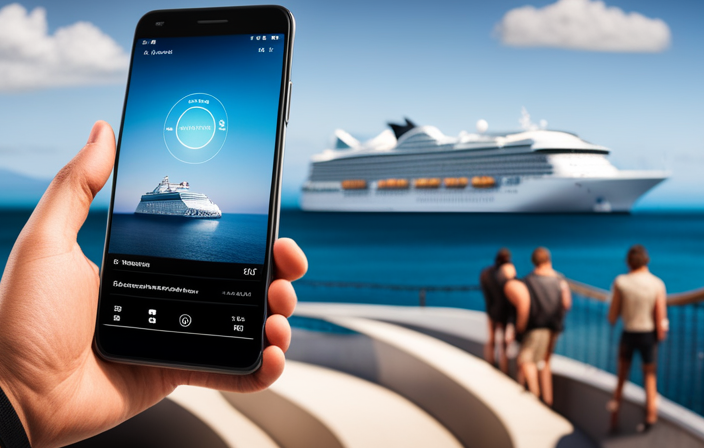
 Cruise FAQs3 months ago
Cruise FAQs3 months agoHow To Check Weather For A Cruise
-
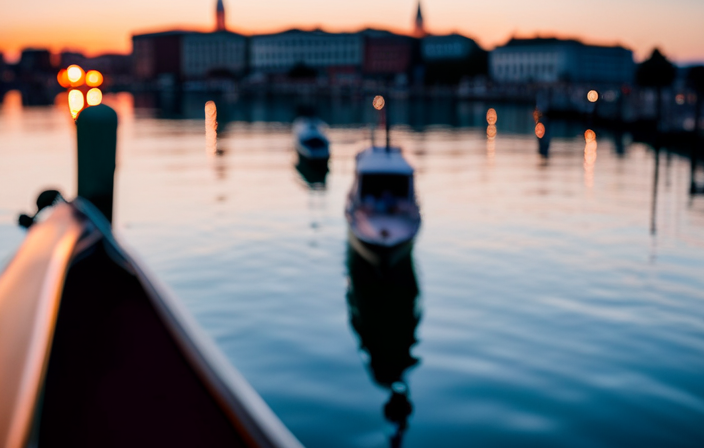
 Cruise FAQs3 months ago
Cruise FAQs3 months agoHow To Get From Venice To Chioggia Cruise Terminal
-

 Cruise FAQs3 months ago
Cruise FAQs3 months agoHow To Set Cruise Control Tesla Model Y
-
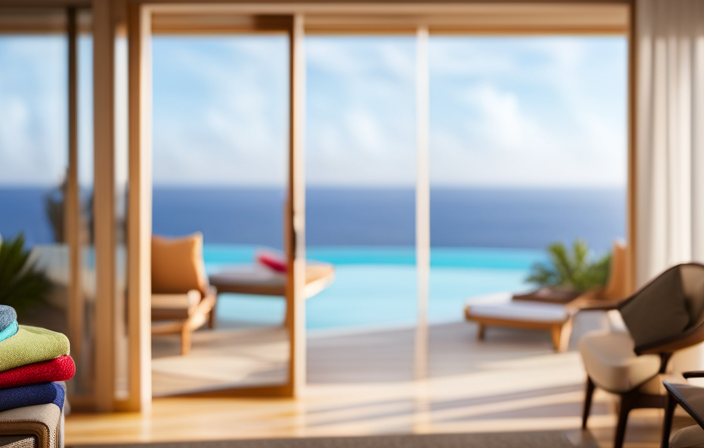
 Cruise Lines3 months ago
Cruise Lines3 months agoHow Do You Qualify For An Ultra Cruise On Carnival
-
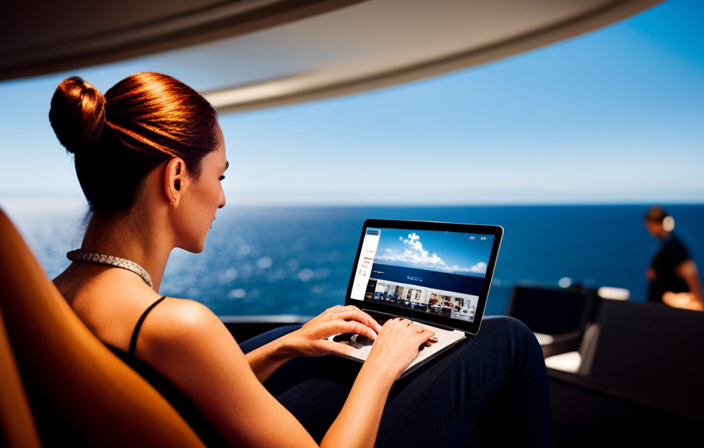
 Onboard Experience3 months ago
Onboard Experience3 months agoUltimate Guide To Ncl’s Onboard Wifi
-
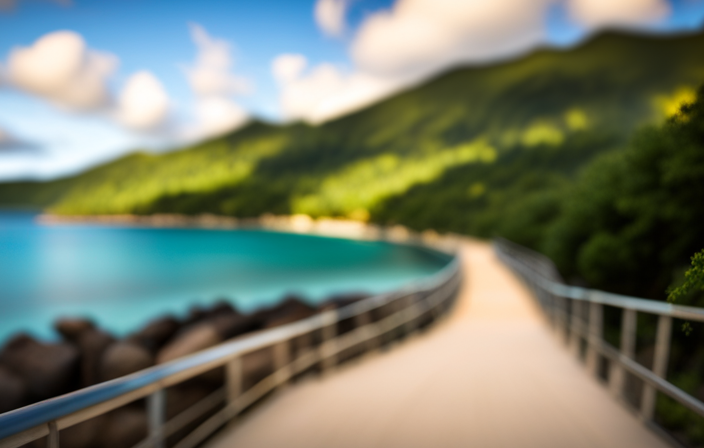
 Port Guides3 months ago
Port Guides3 months agoHow To Get To Magens Bay From Cruise Port
-
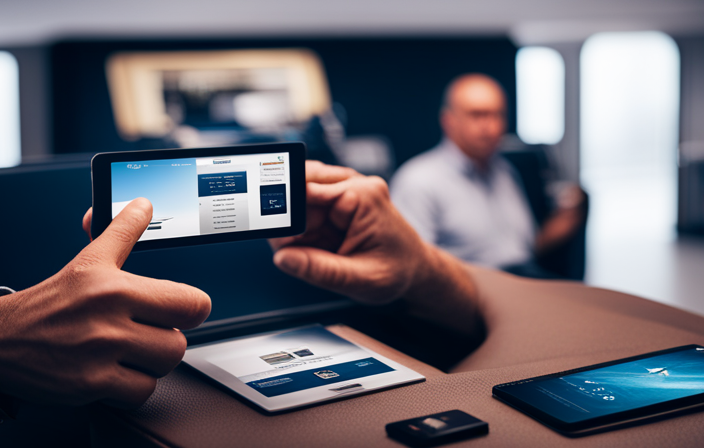
 Cruise FAQs3 months ago
Cruise FAQs3 months agoHow To Print Luggage Tags For Norwegian Cruise




